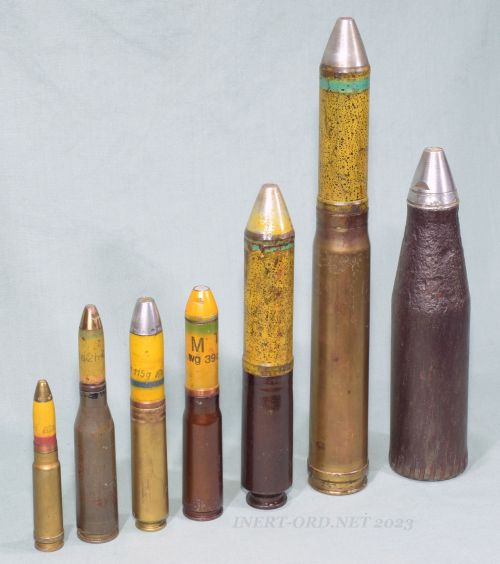This late-war development was deployed on the only operational rocket plane of WWII, the Me 163B Komet. It was used to down at least one Allied bomber, with devistating effect, just before the war's end in Europe.
Basically it was a "volley gun", consisting of two groupings of five-barrels each, one group installed per wing, pointing up. When fired, the projectiles left the muzzles and the barrels were forced in the opposite diretion, out the bottom of the wing, resulting in recoilless operation. All ten barrels were electrically ignited simultaneously, triggered by a photo cell detecting the target's shadow as the fighter performed a close pass underneath.
This subject is covered extensively here: "Rob de Bie's Komet Weapons: SG500 Jägerfaust". Certainly worth a visit.



Line up of Luftwaffe cannon rounds:
13mm MG13 - 15mm MG151/15 - 20mm MG-FF - 20mm MG151/20 - 30mm MK108 - 30mm MK101/MK103 - 50mm SG500
Keep in mind, the entire SG500 is the projectile. Thin-wall body contruction maximized the explosive payload resulting in a very potent warhead. Ten simultaneous shots was quite a lethal barrage. Early tests demonstrated better than half the rounds could hit a bomber size target. One good hit was considered sufficient.
Not being a fixed round, a separate propellent component was assembled essentially like a muzzle loader. The disposable barrels, propellant and projectiles were likely pre-loaded tube assemblies. A weapons system inspired by the Panzerfaust design.
It was low cost and didn't require much in the way of strategic materials to fabricate as the alloys for the projectile and the rifled tubes (barrels) could be low grade metals, easy to obtain and manufacture. Electrically fired, there was no mechanical mechanism to speak of.
Following this minimalistic design approach, the fuze is pressed into the casing as there is not enough material for threads. (Too much machining time for threads anyway.)
The reason for the long tapered neck is not certain. My guess, it was the simplest way to adapt to an existing fuze type (AZ39), as there was no time or resources to develop a proper design. Not an optimum aerodynamic shape, but good enough.
A curious historical footnote in WWII aviation.
22.12.20